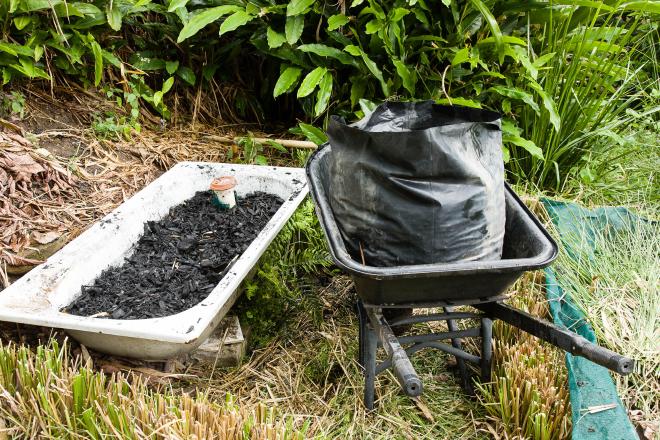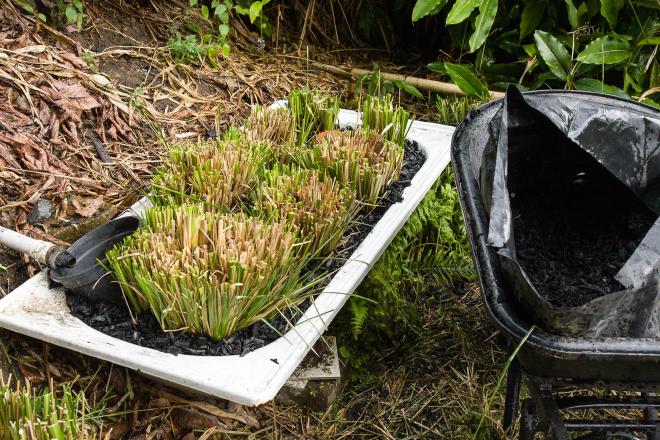Greywater Reedbed Yearly Biochar Replacement
With the cold of Winter nearly upon us, the annual Biochar removal from the reedbed is conducted as the Vetiver has stopped growing for the year. With the cold weather comes lower char/soil temperatures and reduced biological activity which is hopefully negated by the replacement of ‘fresh’ char until the temperature improves. A ‘good’ reedbed needs to be removing the nitrates/phosphates and Vetiver does not grow well during Winter dormancy thereby possibly not converting nitrogen and phosphorus into green matter fast enough.
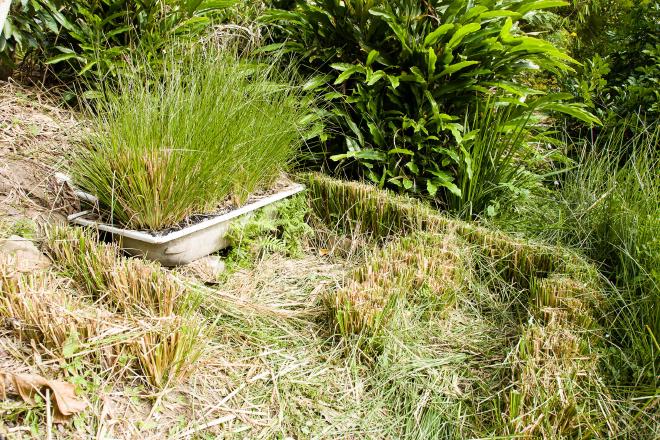
The exercise begins with removing the upper biomass and storing it for future pyrolysis or other needs. In this case, the material will be added to a mudbrick project along with other cut Vetiver tops. Pyrolysis or locking up of the material manages any chemical or metals that may be sequestered in the biomass. The clumps are pulled out, divided if required, and placed to the side. I removed 2.5 small clumps from the bathtub and planted them elsewhere this time as space was becoming limited.
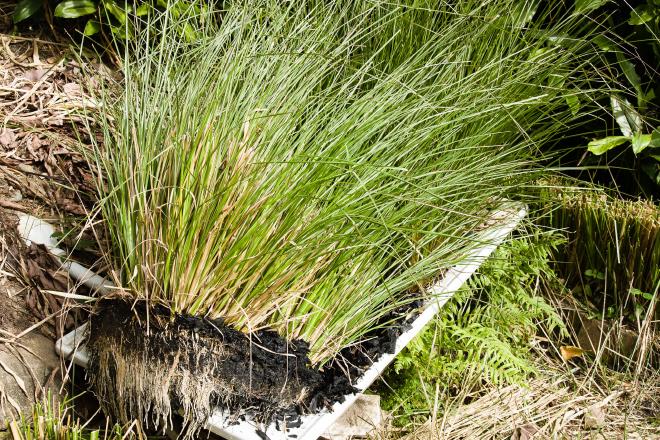
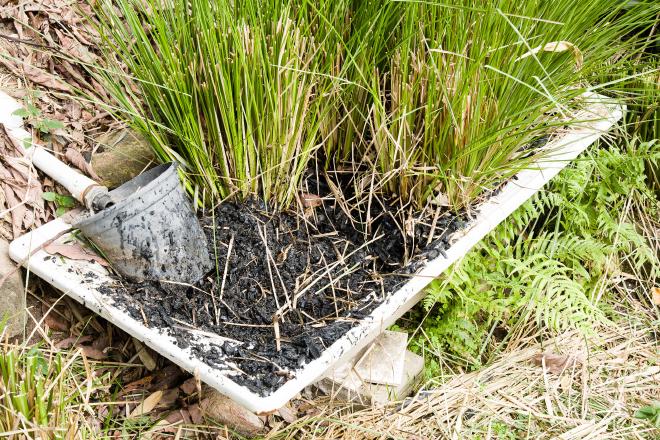
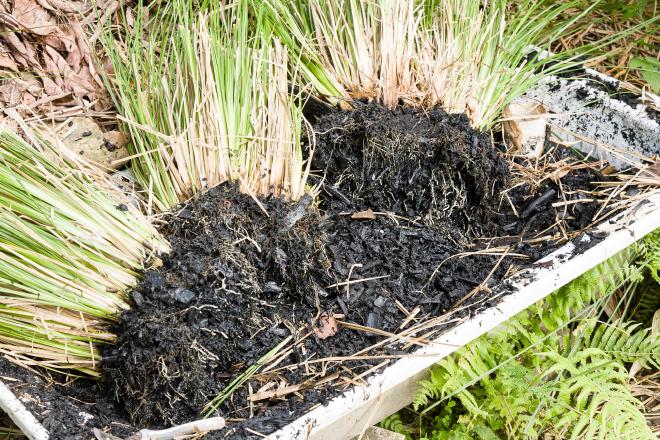
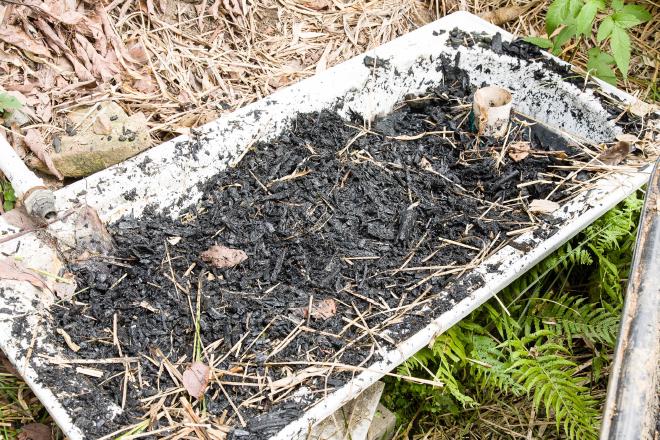
Below are general shots of the root growth over the last approximately 12 months. In high nutrient and lower aerated water, the roots remain short belying the huge amount of biomass removed from the Vetiver tops in previous maintenance sessions during the warmer months.
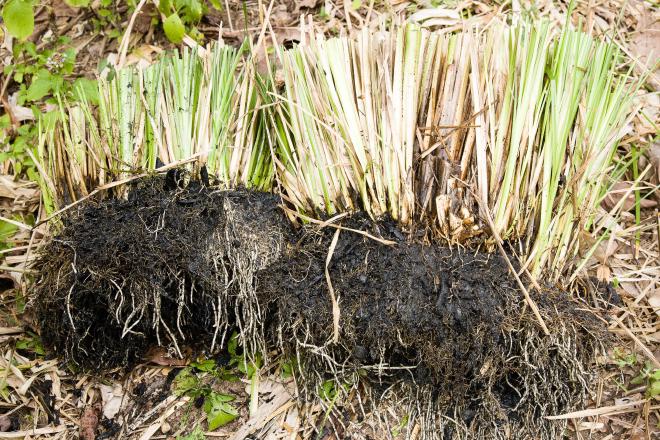
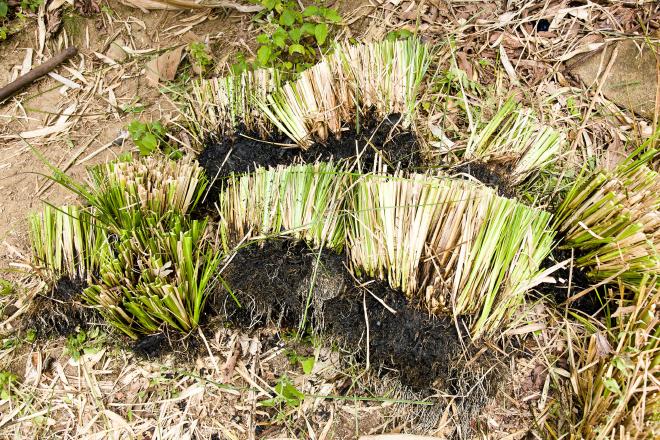
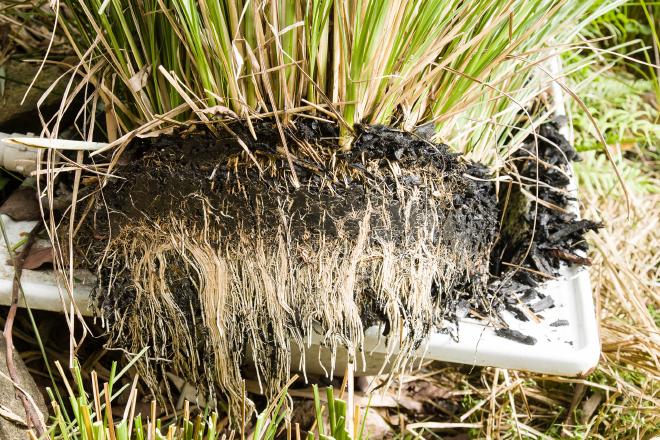
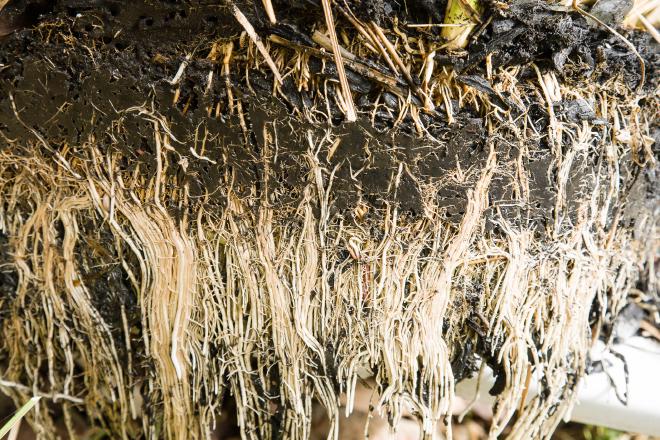
Char is removed and placed/thrown in a native garden bed as mulch. Note the healthy worm population surviving on the organic matter/grease that comes through the pipe and organic matter provided by the Vetiver and other leaves that may blow in. These worms got into the tub through the original trial of using potted stock some years ago and have, even through near full removal of their population, managed to keep breeding by hiding in the roots of the Vetiver that is pulled and put back in so I hesitate to break apart or pyrolysize the roots to maintain the population in the tub. Compost worms are also excellent at cleaning black and greywater so the combination of the three factors (worms, char, and Vetiver) could possibly mean more efficient reduction in the negative components of unsafe water.
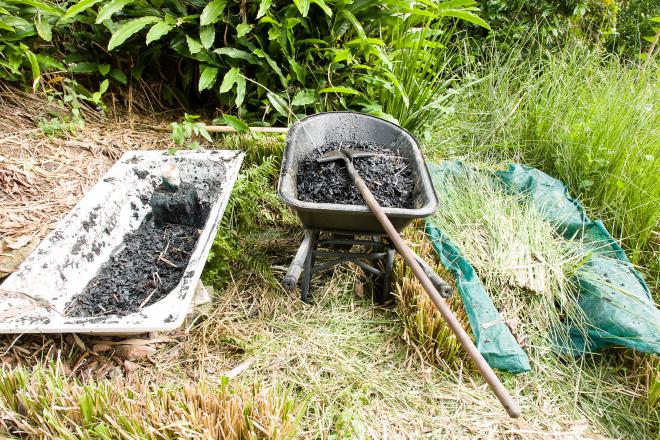
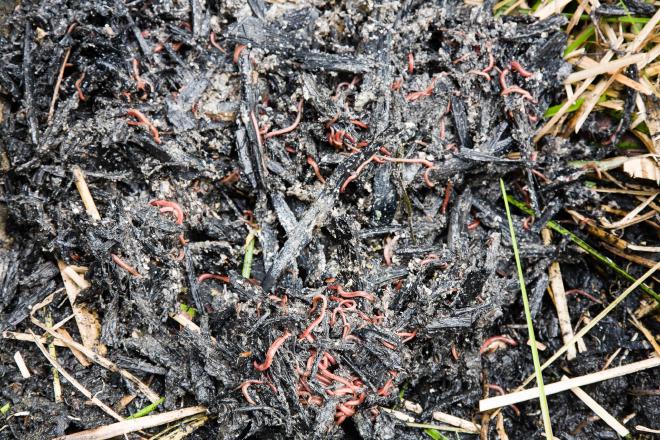
Char is replaced into the bed, approx 100L of, and the plants are positioned until the weather warms and growth begins. The job takes approximately 30 minutes and besides 3-4 cuts of the grass during the growth season, that is all the maintenance that is required for 12 months.
